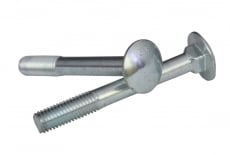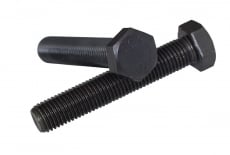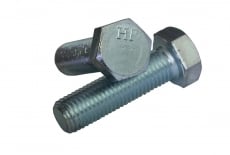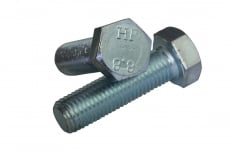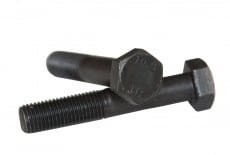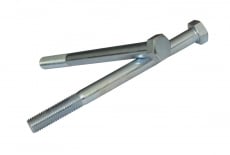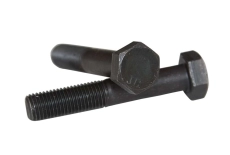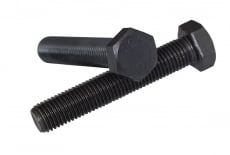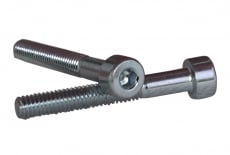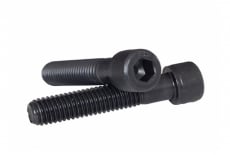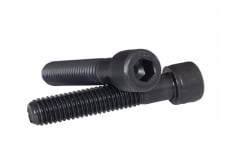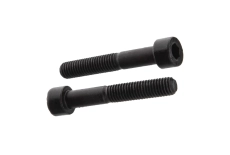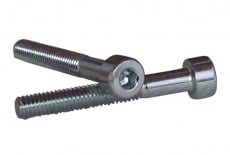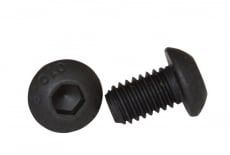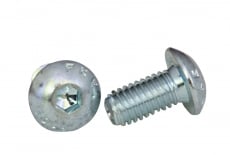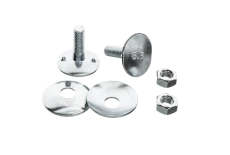What is Torque?
Torque (or tightening torque) is a physical quantity that defines the force applied to a threaded connection (bolt or nut) during tightening. It is measured in Newton meters (N·m) and determines the degree of bolt tension that holds the connected parts together.
Proper bolt tightening is critically important to ensure the reliability and safety of threaded connections in various structures and mechanisms. Incorrect tightening torque can lead to loosening of the connection or even its failure. This article will cover the key aspects of selecting the correct tightening torque for bolts and provide tables for different strength grades and thread diameters.
Why is it important to follow the correct tightening torque?
Its correct value is guaranteed:
- Optimal load distribution – prevents uneven wear of parts.
- Prevention of thread damage – excessive torque can strip the thread or break the bolt.
- Operational safety – particularly critical in the automotive and aerospace industries.
Factors Affecting the Choice of Torque
When determining the optimal tightening torque, the following factors should be considered:
- Bolt strength grade: A higher strength grade allows for a greater tightening tightening torque.
- Thread diameter and pitch: As the bolt diameter increases, the recommended tightening tightening torquealso increases.
- Material of the bolt and connected parts: Different materials have different mechanical properties, affecting the allowable tightening tightening torque.
- Presence of lubrication or coating: The use of lubrication reduces friction in the threaded connection, allowing the required tightening to be achieved with lower tightening torque.
Torque Table for Metric Bolts
Below is a table of recommended tightening torques for bolts of different strength grades and thread diameters. These values are approximate and may vary depending on specific operating conditions. Always refer to the manufacturer's technical documentation for precise data.
Pre-tightening force and torque table for threaded connection with coarse thread pitch and friction coefficient 0.14
|
Nominal thread diameter |
Thread pitch, P |
Nominal cross-sectional area As, mm2 |
Pre-tightening force Q, H |
Torque Mkr Hm |
||||||||
|
4,6 |
5,6 |
8,8 |
10,9 |
12,9 |
4,6 |
5,6 |
8,8 |
10,9 |
12,9 |
|||
|
М4 |
0,7 |
8,78 |
1280 |
1710 |
4300 |
6300 |
7400 |
1,02 |
1,37 |
3,3 |
4,8 |
5,6 |
|
М5 |
0,8 |
14,2 |
2100 |
2790 |
7000 |
10300 |
12000 |
2,0 |
2,7 |
6,5 |
9,5 |
11,2 |
|
М6 |
1,0 |
20,1 |
2960 |
3940 |
9900 |
14500 |
17000 |
3,5 |
4,6 |
11,3 |
16,5 |
19,3 |
|
М8 |
1,25 |
36,6 |
5420 |
7230 |
18100 |
26600 |
31100 |
8,4 |
11 |
27,3 |
40,1 |
46,9 |
|
М10 |
1,5 |
58 |
8640 |
11500 |
28800 |
42200 |
49400 |
17 |
22 |
54 |
79 |
93 |
|
М12 |
1,75 |
84,3 |
12600 |
16800 |
41900 |
61500 |
72000 |
29 |
39 |
93 |
137 |
160 |
|
М14 |
2,0 |
115 |
17300 |
23100 |
57500 |
84400 |
98800 |
46 |
62 |
148 |
218 |
255 |
|
М16 |
2,0 |
157 |
23800 |
31700 |
78800 |
115700 |
135400 |
71 |
95 |
230 |
338 |
395 |
|
М18 |
2,5 |
193 |
28900 |
38600 |
99000 |
141000 |
165000 |
97 |
130 |
329 |
469 |
549 |
|
М20 |
2,5 |
245 |
37200 |
49600 |
127000 |
181000 |
212000 |
138 |
184 |
464 |
661 |
773 |
|
М22 |
2,5 |
303 |
46500 |
62000 |
158000 |
225000 |
264000 |
186 |
250 |
634 |
904 |
1057 |
|
М24 |
3,0 |
353 |
53600 |
71400 |
183000 |
260000 |
305000 |
235 |
315 |
798 |
1136 |
1329 |
|
М27 |
3,0 |
459 |
70600 |
94100 |
240000 |
342000 |
400000 |
350 |
470 |
1176 |
1674 |
1959 |
|
М30 |
3,5 |
561 |
85700 |
114500 |
292000 |
416000 |
487000 |
475 |
635 |
1597 |
2274 |
2662 |
|
М33 |
3,5 |
694 |
107000 |
142500 |
636000 |
517000 |
605000 |
645 |
865 |
2161 |
3078 |
3601 |
|
М36 |
4,0 |
817 |
125500 |
167500 |
427000 |
608000 |
711000 |
1080 |
1440 |
2778 |
3957 |
4631 |
|
М39 |
4,0 |
976 |
151000 |
201000 |
512000 |
729000 |
853000 |
1330 |
1780 |
3597 |
5123 |
5994 |
Torque Calculation Formula
Mkr = K * P * d,
where:
- K – tightening coefficient applied to the bolt (average value from the manufacturer’s certificate is used),
- P – controlled preload force of the bolt (excluding relaxation losses), kN,
- d – nominal diameter of the bolt’s threaded part, mm.
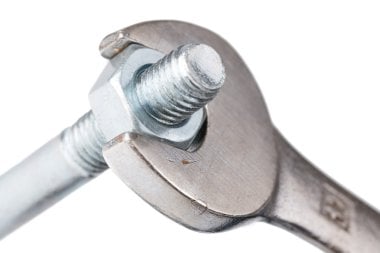
Bolt Tightening Methods
- Tightening with a torque wrench – the most accurate method, allowing precise torque control.
- Tightening "by feel" – suitable for small connections but lacks precision.
- Tightening by the angle-turn method – after initial tightening, the bolt is rotated by a specific angle for more precise tension.
Recommendations for Bolt Tightening
- Use a torque wrench: This ensures precise torque control and prevents exceeding permissible values. The torque wrench must be properly calibrated.
- Check the thread condition: Ensure that the thread is clean and undamaged before tightening.
- Use lubrication when required: If specified in the technical documentation, apply the appropriate lubricant to reduce friction and achieve the necessary torque.
- Follow the tightening sequence: Especially important for flange or multi-bolt connections. Even tightening ensures better load distribution.
Use of Special Tools for Torque Control
Using a standard wrench does not guarantee torque accuracy, as the applied force depends on the mechanic's skill and perception. Therefore, special tools such as torque wrenches are used in critical applications.
When selecting a torque wrench, consider its maximum permissible load. Ideally, the tool should exceed the average required tightening torque by 25–30%.
How to Properly Tighten Bolts with a Torque Wrench?
- Clean bolts and threaded connections from dirt, rust, and debris.
- Set the required tightening torque on the wrench, following the instructions.
- Start tightening, applying force gradually.
- Wait for the click (in a limit-type wrench) or the appropriate signal (in a digital wrench).
- Ensure the connection is secure and avoid over-tightening.
Consequences of Improper Bolt Tightening
Excessive Force
- Bolt failure due to excessive stretching.
- Thread stripping, making the hole unusable for future use.
- Deformation of connected parts.
Insufficient Tightening
- Vibration and gradual loosening of the fastening.
- Fluid leakage in systems where sealing is crucial (e.g., pipelines).
- Accelerated wear of components due to micro-movements.
How to Determine the Correct Torque?
To determine the optimal tightening torque, special tables are used, based on experimental data.
The formation of these tables occurs by gradually increasing the tightening torque until the bolt fails. The optimal value is considered to be 75–80% of the failure torque.
The correct tightening torque is a crucial parameter for the reliable operation of threaded connections. Using torque wrenches and following recommended torque values helps prevent premature wear of components, fastener damage, and critical failures.


 Bolts (16)
Bolts (16)